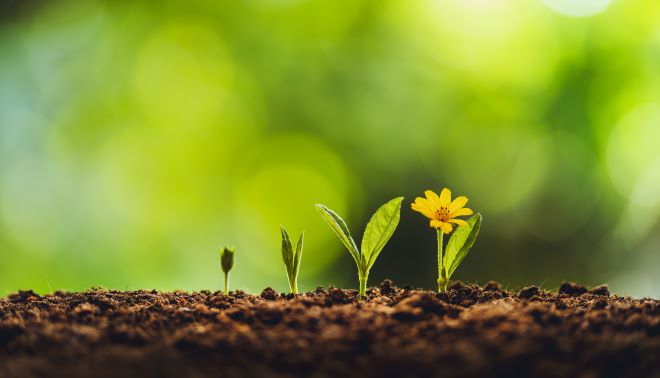With longer, brighter days and slightly milder temperatures just around the corner, it's a good time to start planning your spring gardening activitie
With longer, brighter days and slightly milder temperatures just around the corner, it’s a good time to start planning your spring gardening activities. Each season brings new opportunity for plants and flowers and the transition from winter to spring is a crucial time of year to get your garden in order for the year ahead, whether you are growing flowers, vegetables or shrubbery. There are some important gardening tasks to take care of throughout the winter – delicate plants such as dahlias will need extra protection, for example, and wildlife will need extra care and food, especially on frosty days. But as spring approaches the focus should be more around planting bulbs, new seeds, planning the placement of new plants and flowers, and helping to freshen up your lawn by using grass seeds and garden fertiliser. Other late winter/early spring gardening tasks include:
- Pruning – almost all plants will benefit from pruning just before the spring
- Removing dead wood and plants will help freshen up the garden
- Fixing window boxes and maybe giving them a fresh lick of paint
- Planning out a vegetable patch
- Laying mulch over your vegetable patch
- Maintain garden tools and garden furniture
- Put iron sulphate on grass to kill moss and boost the nutrient levels of your grass for a rich, deep green colour that lasts.
Vegetable patches
There are lots of things to keep in mind when preparing a vegetable patch in your garden. For instance, certain vegetables like potatoes need planting in the early spring. Avoid planting vegetables too close together as they need space to grow, as well as access to plenty of rich soil. Some vegetables and plants may need to be kept in a greenhouse – tomatoes, courgettes, cucumbers and strawberries will all thrive in a greenhouse, while the likes of peas, spring onions and radishes prefer to be outdoors. If you don’t have the space for a vegetable patch, start small with a herb garden. Herbs like thyme, basil, mint and rosemary are easy to grow in small pots, and could even be placed on a sunny windowsill in your kitchen.
If you are building a vegetable box or greenhouse, be sure to have the right tools to hand before you start construction. Map out a plan for the structure and build it carefully so it will last. Having a good selection of different products for your project will ensure you can build it easily and make repairs over time if you spot cracks in flower pots or other areas of your greenhouse or shed. A great set of tools is also handy to have for repairing outdoor tables, chairs, hanging baskets, and window boxes.
Garden safety & security
Keeping your garden safe and secure is also an important consideration, as it is not uncommon for items to go missing from gardens in the UK. Taking care of locks, fencing, and ensuring any gardening equipment is safely locked away in a shed or garage are good ways to protect your valuables. Garden lighting can also go a long way in deterring burglars at night. Keeping your garden safe from intruders such as rabbits and squirrels, however, is another story – don’t be surprised if you wake up on a spring morning to find ‘someone’ has been nibbling on the lettuces and carrots – this too is a common occurrence in the UK, in particular in the countryside.
Keeping a garden can bring lots of joy and is a great way to make the most of the great outdoors all year round. There are plenty of resources online that can help with garden planning, as well as online shops selling gardening books, tools, and seeds, so a trip to the garden centre isn’t always essential to turn your outdoor space into a blossoming wonderland.



















































































































COMMENTS